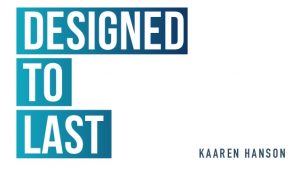Mời các bạn làm bài tập ôn luyện dạng bài Multiple Choice trong IELTS Reading. Bài tập này giúp các bạn ôn lại kỹ năng xử lý dạng bài câu hỏi trắc nghiệm chọn 1 đáp án đúng. Bài có tất cả 5 câu hỏi chọn đáp án đúng. Sau khi làm xong bài, các bạn hãy ấn submit để xem kết quả bài làm của mình và giải thích của từng câu hỏi. Bạn hãy thử làm để củng cố và nâng cao kiến thức để chuẩn bị cho bài thi IELTS Reading nhé!
Chúc bạn có thời gian hữu ích trên website!
Designed to Last
Could better design cure our throwaway culture?

A Jonathan Chapman, a senior lecture at the University of Brighton, UK, is one of a new breed of “sustainable designers’. Like many of us, they are concerned about the huge waste associated with Western consumer culture and the damage this does to the environment. Some, like Chapman, aim to create objects we will want to keep rather than discard. Others are working to create more efficient or durable consumer goods, or goods designed with recycling in mind. The waste entailed in our fleeting relationships with consumer durables is colossal
B Domestic power tools, such as electric drills, are a typical example of such waste. However much DIY the purchaser plans to do, the truth is that these things are thrown away having been used, on average, for just ten minutes. Most will serve (conscience time, gathering dust on a shelf in the garage; people are reluctant to admin that they have wasted their money. However, the end is inevitable thousands of years in landfill waste sites. In its design, manufacture, packaging, transportation and disposal, a power tool consumes many times its own weight in resources, all for a shorter active lifespan than that of the average small insect.
C To understand why we have become so wasteful, we should look to the underlying motivation (of consumers. ‘People own things to give expression to who they are, and to show what group of people they feel they belong to,’ Chapman says. In a world of mass production, however, that symbolism has lost much of its potency. For most of human history, people had an intimate relationship with objects they used or treasured. Often they made the objects themselves, or family members passed them on. For more specialist objects, people relied on expert manufacturers living close by, whom they probably knew personally. Chapman points out that all these factors gave objects a history – a narrative – and an emotional connection that today’s mass production cannot match. Without these personal connections, consumerist culture instead idolizes novelty .We know we can’t buy happiness, but the chance to remake ourselves with glossy, box-fresh products seems irresistible. When the novelty fades we simply renew the excitement by buying more new stuff: what John Thackara of Doors of Perception, a network for sharing ideas about the future of design, calls the “schlock of the new”.
D As a sustainable designer, Chapman’s solution is what he calls “emotionally durable design”. Think about your favorite old jeans. They just don’t have the right feel until they have been worn and washed a hundred times, do they? It is like they are sharing your life story. You can fake that look, but it isn’t the same. Chapman says the gradual unfolding of a relationship like this transforms our interactions with objects into something richer than simple utility. Swiss industrial analyst Walter Stahel, visiting professor at the University of Surrey, calls it the “teddy-bear factor”. No matter how ragged and worn a favorite teddy becomes, we don’t rush out and buy another one. As adults, our teddy bear connects us to our childhoods, and this protects it from obsolescence Stahel says this is what sustainable design needs to do.
E It is not simply about making durable items that people want to keep. Sustainable design is a matter of properly costing the whole process of production, energy use and disposal. “It is about the design of systems, the design of culture.” says Tim Cooper from the Centre for Sustainable Consumption at Sheffield Hallam University in Britain. He thinks sustainable design has been “surprisingly slow to take off’ but says looming environmental crises and resource depletion are pushing it to the top of the agenda.
F Thackara agrees. For him, the roots of impending environmental collapse can be summarized in two words: weight and speed. We are making more stuff than the planet can sustain and using vast amounts of energy moving more and more of it around ever faster. The Information Age was supposed to lighten our economies and reduce our impact on the environment, but the reverse seems to be happening. We have simply added information technology to the industrial era and hastened the developed world’s metabolism, Thackara argues.
G Once you grasp that, the cure is hardly rocket science: minimize waste and energy use, stop moving stuff around so much and use people more. EZIO MANZINI,PROFESSOR of industrial design at Politecnico di Milano university, Italy, describes the process of moving to a post-throwaway society as like “changing the engine of an aircraft in mid-flight’ Even so, he believes it can be done, and he is not alone.
H Manzini says a crucial step would be to redesign our globalized world into what he calls the “multi-local society”. His vision is that every resource, from food to electricity generation, should as far as possible be sourced and distributed locally. These local hubs would then be connected to national and global networks to allow the most efficient use and flow of materials.
I So what will post-throwaway consumerism look like? For a start, we will increasingly buy sustainably designed products. This might be as simple as installing energy-saving light bulbs, more efficient washing machines, or choosing locally produced groceries with less packaging.
J We will spend less on material goods and more on services. Instead of buying a second car, for example, we might buy into a car-sharing network. We will also buy less and rent a whole lot more: why own things that you hardly use, especially things that are likely to be updated all the time? Consumer durables will be sold with plans already in place for their disposal. Electronic goods will be designed to be recyclable, with the extra cost added to the retail price as prepayment. As consumers become increasingly concerned about the environment, many big businesses are eagerly adopting sustainable design and brushing up their green credentials to please their customers and stay one step ahead of the competition.
Questions 1-5
Choose the correct letter, A, B,C or D.
Write the correct letter in boxes 1-5 on your answer sheet.
1. In the second paragraph, the expression ‘ conscience time ‘ refers to the fact that the owners
A .Wish they had not bought the power tool.
B . Want to make sure the tool is stored safely
C. Feel that the tool will increase in value in the future
D. Would feel guilty if they threw the tool away immediately.
2. Jonathan Chapman uses the word ‘ narrative’ in the third paragraph to refer to the fact that the owner?
A. told a story about how the item was bought
B. was aware of how the item had come into being
C. Felt that the item became more useful over time.
D. was told that the item had been used for a long time.
3. In the third paragraph, the writer suggests that mass- produced goods are
A. inferior in quality
B. less likely to be kept for a long time
C. attractive because of their lower prices
D. less tempting than goods which are traditionally produced
4. Lack of personal connection to goods is described as producing
A. a belief that older goods are superior
B. an attraction to well- designed packaging
C. a desire to demonstrate status through belongings
D. a desire to purchase a constant stream of new items.
5. Jeans and teddy bears are given as examples of goods which
A. have been very well designed
B. take a long time to show wear
C. are valued more as they grow older
D. are used by the majority of the population
 IELTS Max Luyện thi IELTS cam kết đầu ra
IELTS Max Luyện thi IELTS cam kết đầu ra




